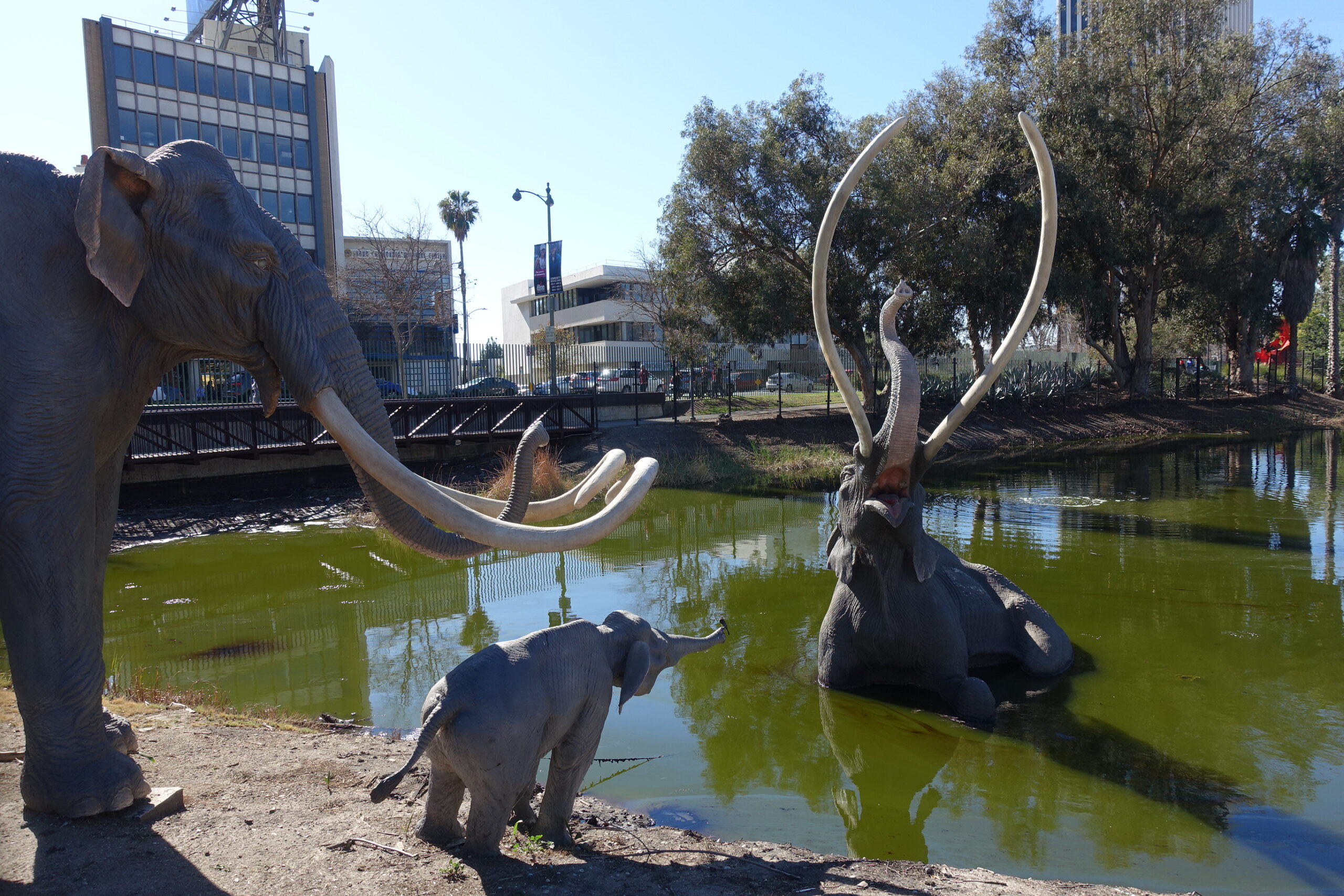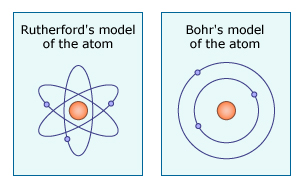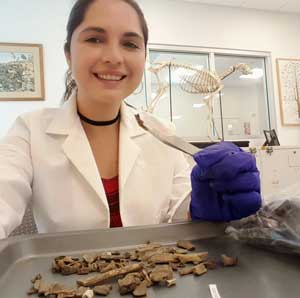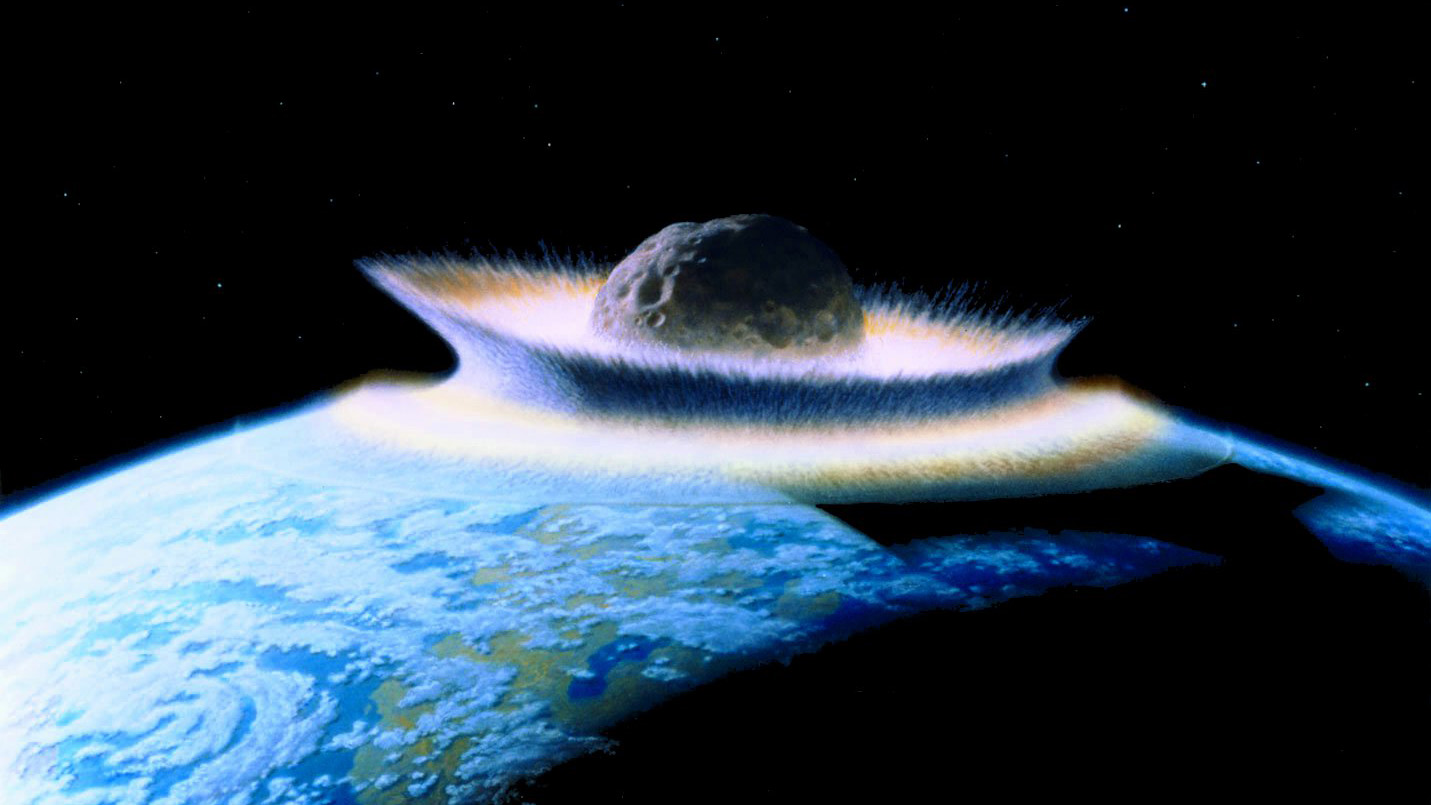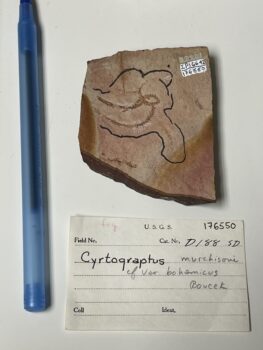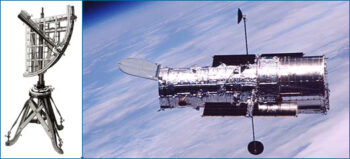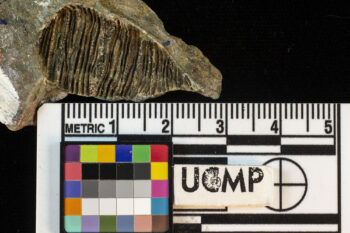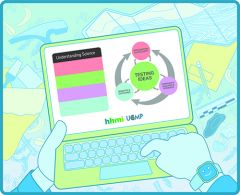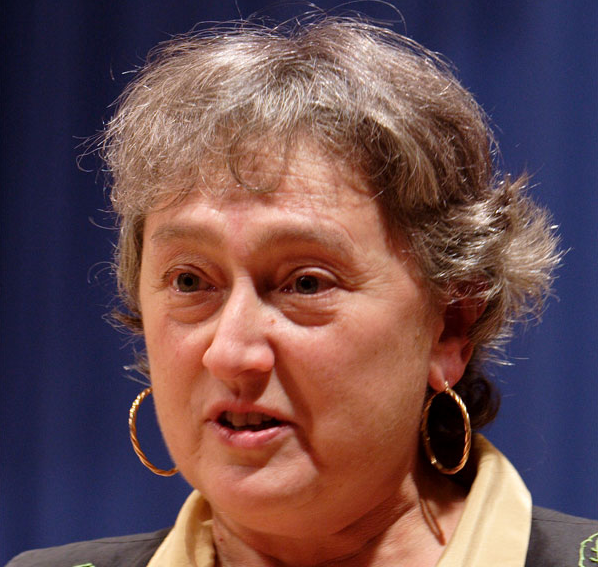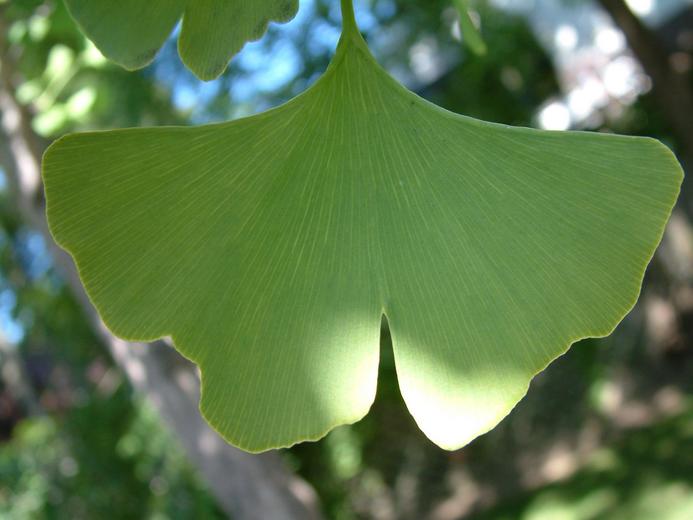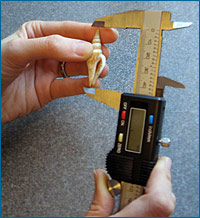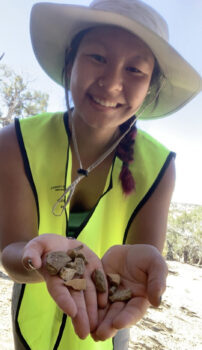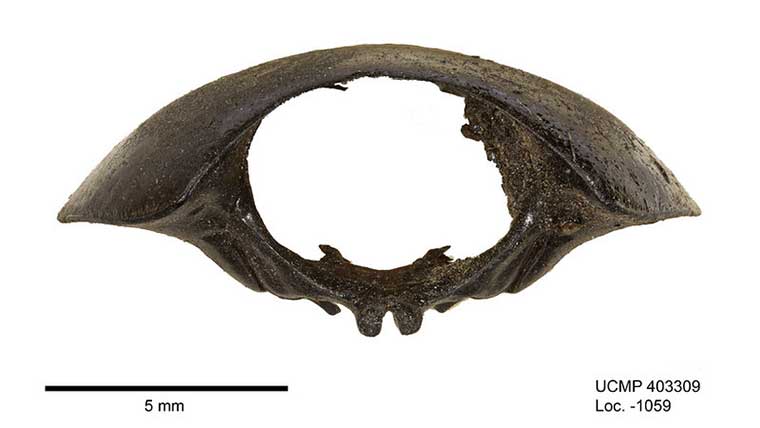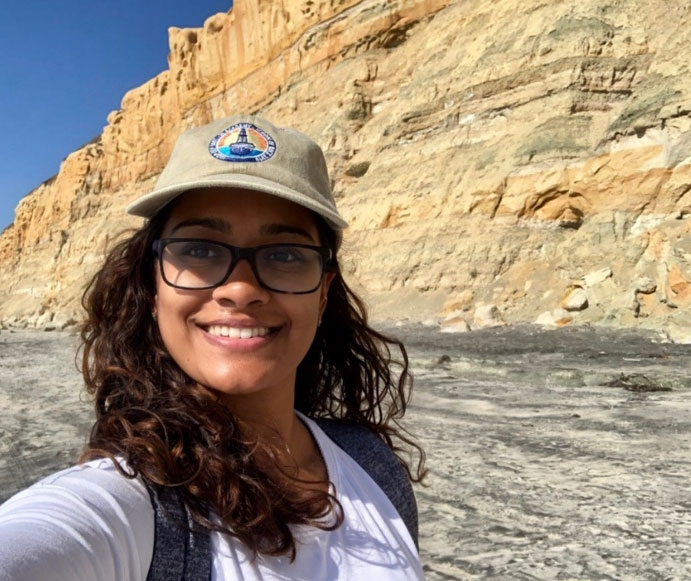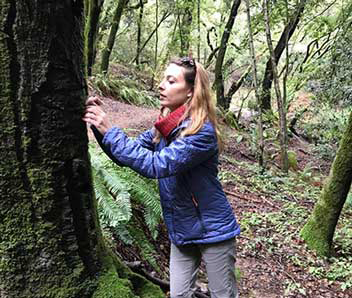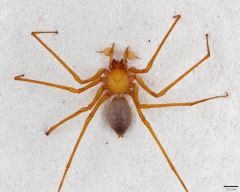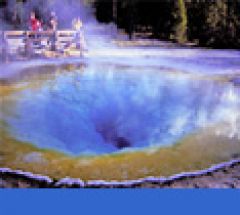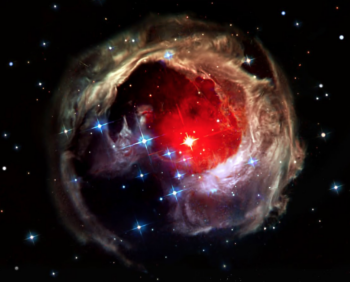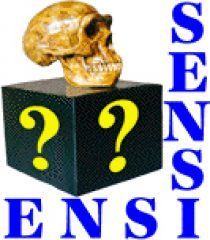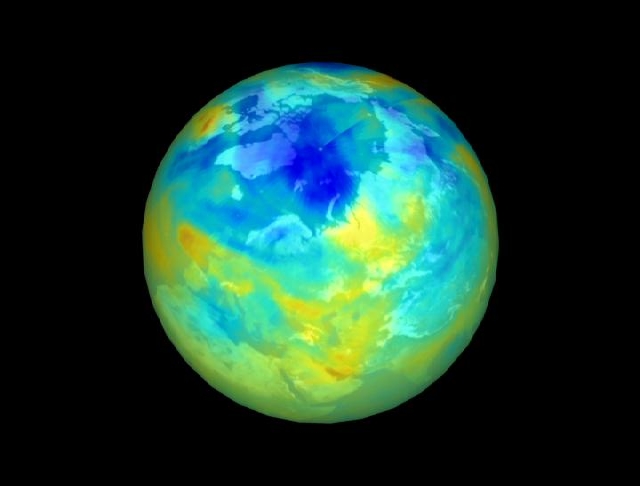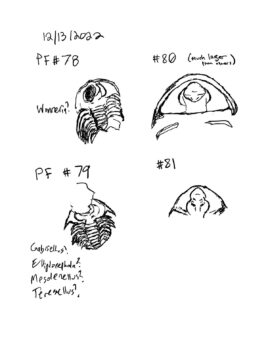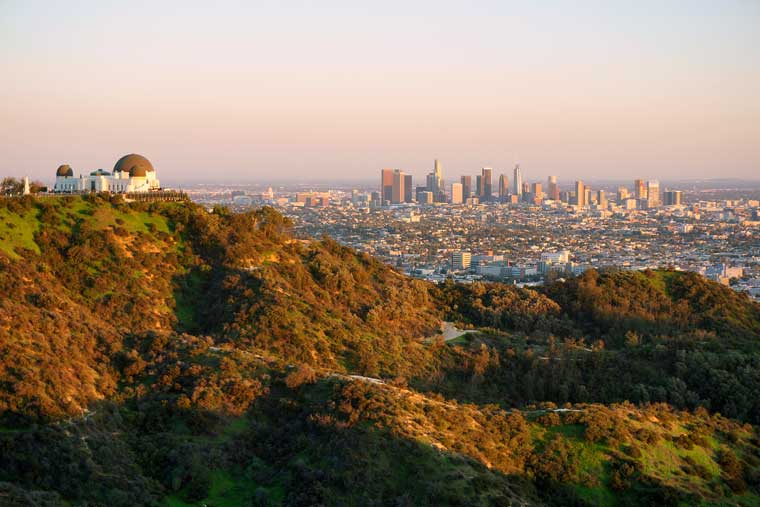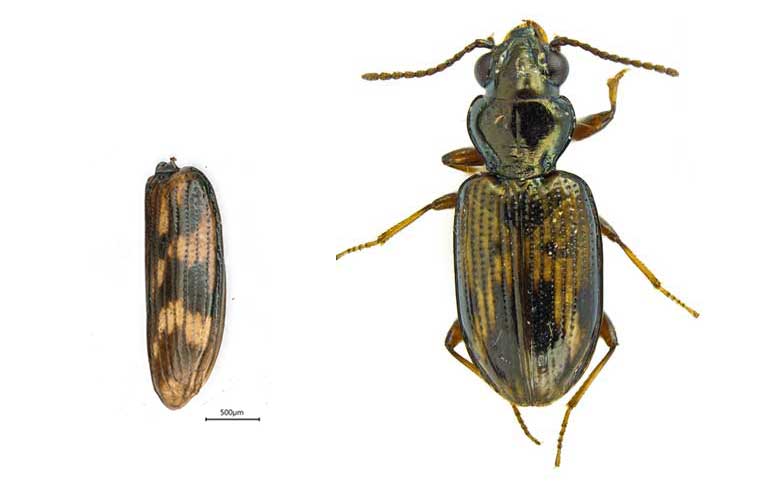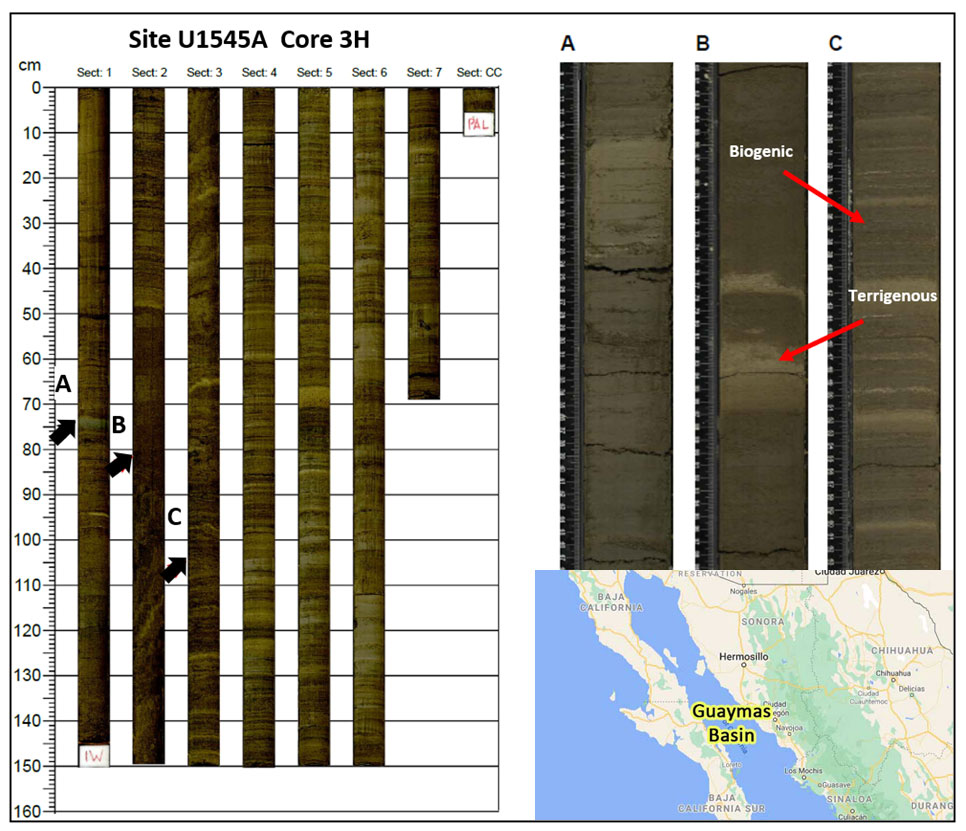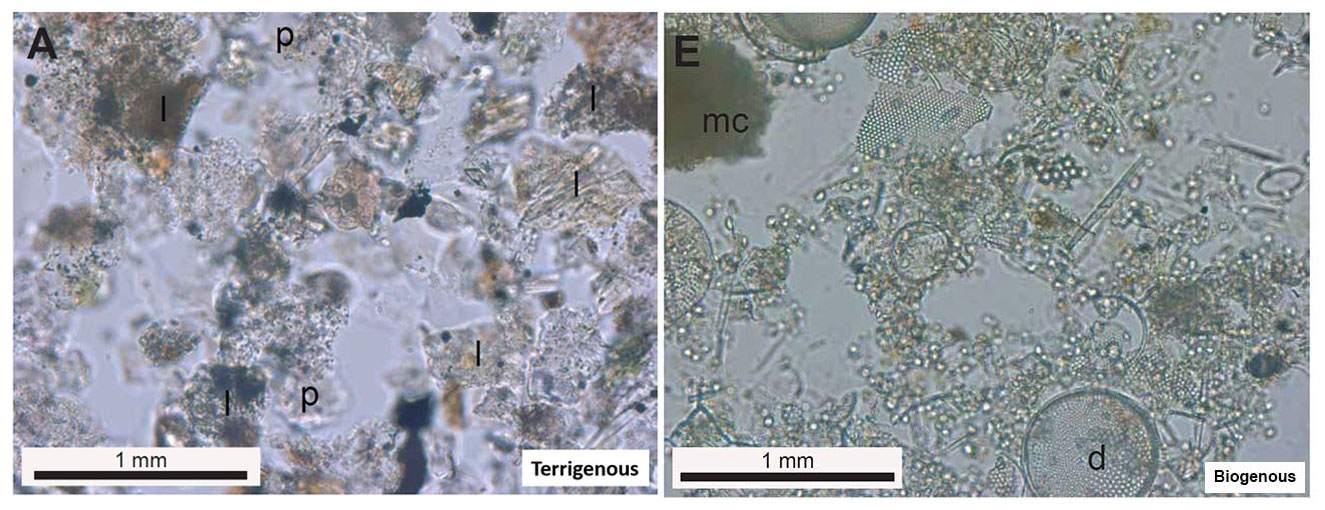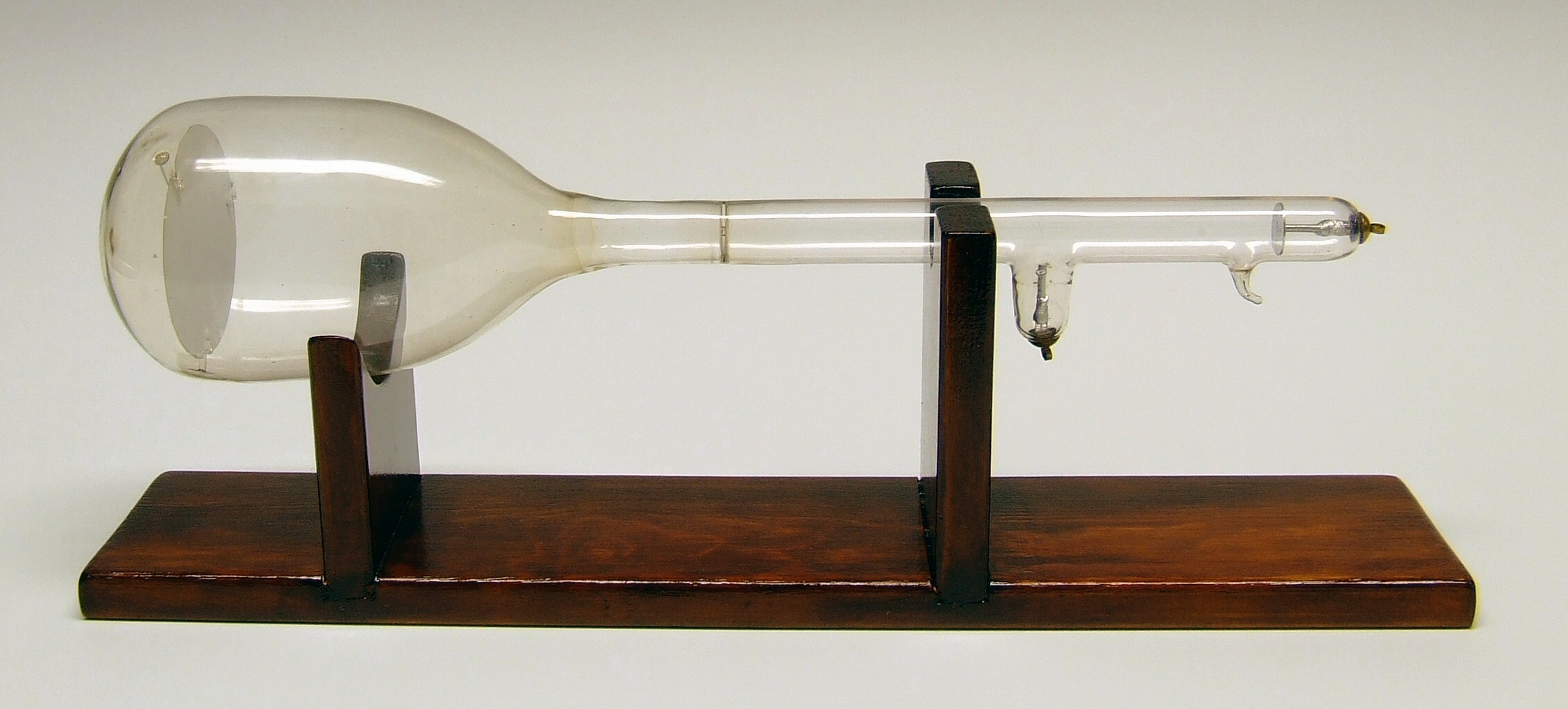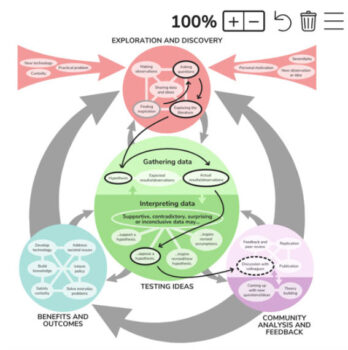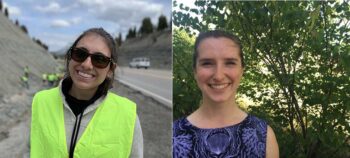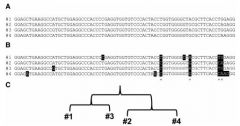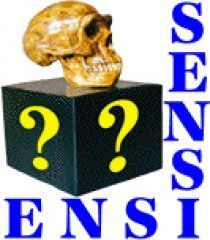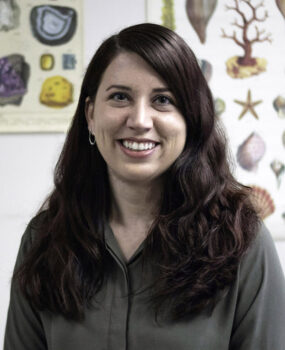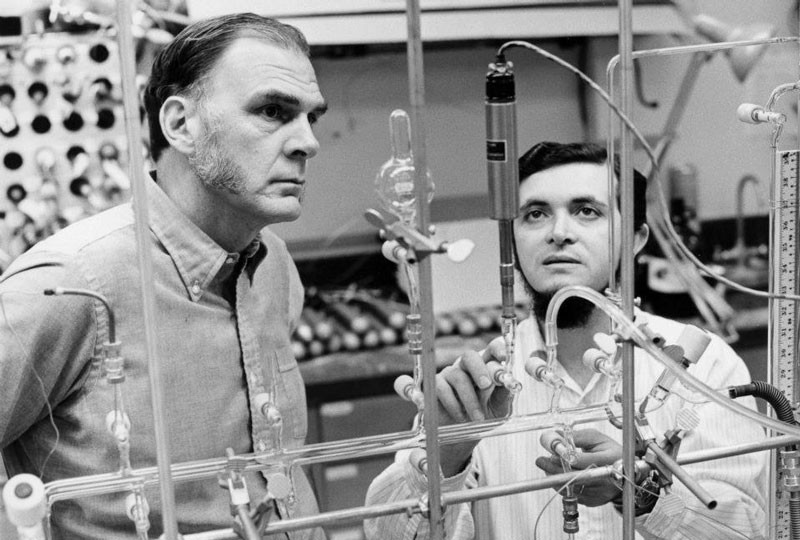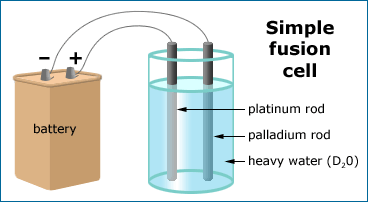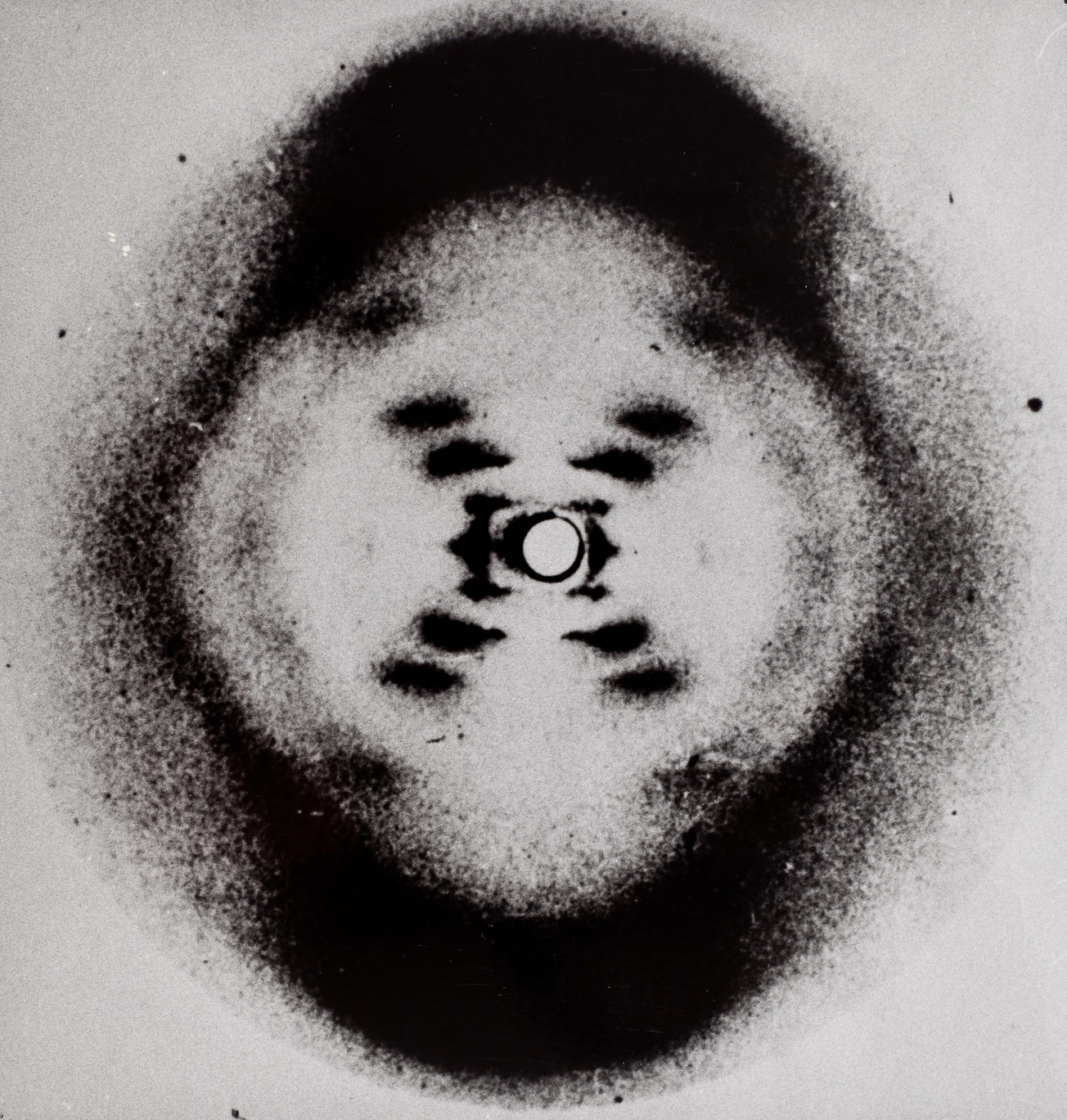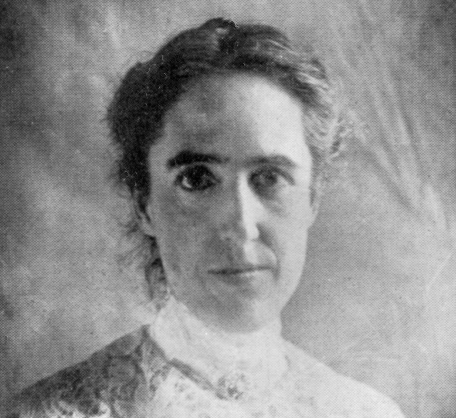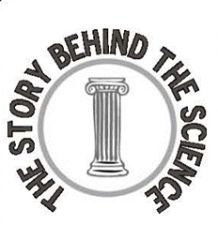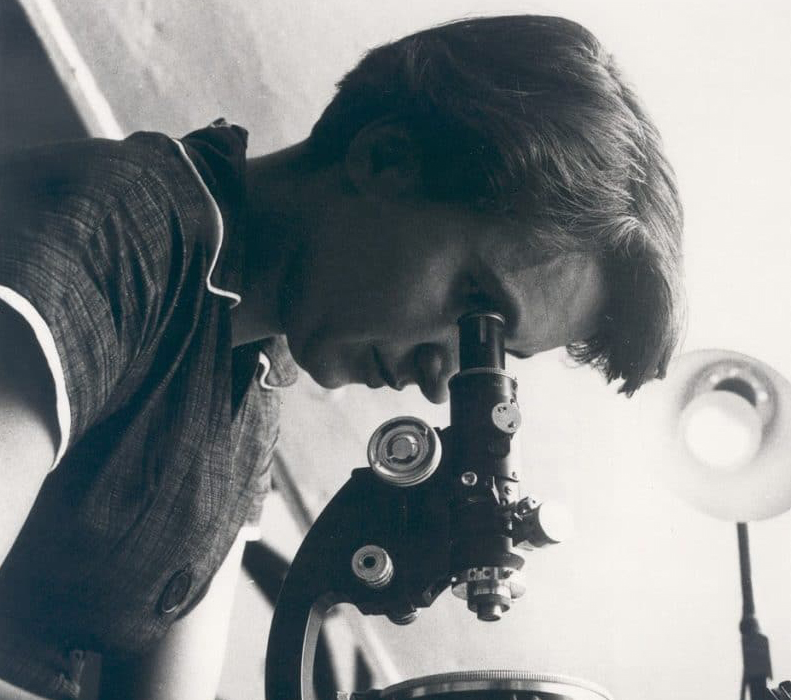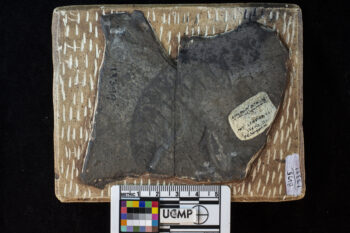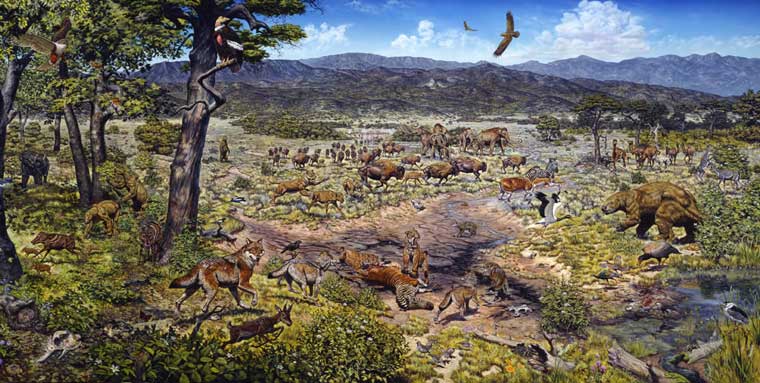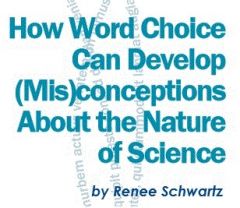We’ve assembled a database of resources vetted for both scientific accuracy and pedagogical soundness. Or check out the 13-16 Conceptual Framework to search by the concepts each resource addresses. Search below by topic or by keyword:
Search grades 13-16 lessons and resources:
Found 51 resources:
50,000 years of Los Angeles summers?
Grade Level(s):
- 9-12
- College
Source:
- UC Museum of Paleontology
Resource type:
- Science Story
Discipline:
- Life Science
Time: 5 minutes
Overview
This Science Short illustrates the revision of scientific ideas in the context of research about fossil insects. Get tips on using Science Stories in class.
A science prototype: Rutherford and the atom
Grade Level(s):
- 9-12
- College
Source:
- UC Museum of Paleontology
Resource type:
- classroom activity
- Science Story
Discipline:
- Physical Sciences
Time: 30 minutes
Overview
Have your students read the full article on Rutherford's investigations of the atom and compare it to the Science Checklist in order to explore the key traits that make science science. Get more tips on using Science Stories in class.
Amazon fly
Grade Level(s):
- 6-8
- 9-12
- College
Source:
- UC Museum of Paleontology
Resource type:
- lab activity
Discipline:
- Life Science
Time: 10-15 minutes
Overview
This short activity quickly engages the participants in the process of developing testable hypotheses. Students come up with multiple hypotheses to explain a set of observations and figure out how to test these hypotheses.
Ancient bones, modern problems: One scientist’s trash is another scientist’s data
Grade Level(s):
- 9-12
- College
Source:
- UC Museum of Paleontology
Resource type:
- research profile
- Science Story
Discipline:
- Life Science
Time: 20 minutes
Overview
Learn how scientists reuse and upcycle their data, while following graduate student Maria Viteri as she investigates ancient and modern small mammal communities. Get tips for using science stories in class.
Asteroids and dinosaurs: Unexpected twists and an unfinished story
Grade Level(s):
- 9-12
- College
Source:
- UC Museum of Paleontology
Resource type:
- Science Story
Discipline:
- Earth science
- Life Science
Time: 2 class periods
Overview
This story uses the Science Flowchart to map Walter Alvarez's scientific journey as he investigates an intriguing hypothesis about the extinction of the non-Avian dinosaurs. Get tips for using science stories in class.
Beyond the prototype: Animal psychology
Grade Level(s):
- 9-12
- College
Source:
- UC Museum of Paleontology
Resource type:
- Science Story
Discipline:
- Life Science
Time: 15 minutes
Overview
Have your students read about an investigation of animal navigation and compare it to the Science Checklist in order to explore the key traits that make science science. Get more tips on using Science Stories in class.
Bill Berry and the construction of geologic time
Grade Level(s):
- 6-8
- 9-12
- College
Source:
- UC Museum of Paleontology
Resource type:
- Science Story
Discipline:
- Earth science
Time: 5 minutes
Overview
This Science Short describes how index fossils can help us test hypotheses about long past events that we cannot directly observe. Get tips on using Science Stories in class.
Bundle up your hypotheses
Grade Level(s):
- 9-12
- College
Source:
- UC Museum of Paleontology
Resource type:
- Science Story
Discipline:
- Space science
Time: 20 minutes
Overview
Teach about how science tests hypotheses and assumptions in different combinations, using an example from the history of astronomy. Get tips on using Science Stories in class.
Discovering a strange new group of ancient sea creatures
Grade Level(s):
- 9-12
- College
Source:
- UC Museum of Paleontology
Resource type:
- Science Story
Discipline:
- Earth science
- Life Science
Time: 10 minutes
Overview
This Science Short illustrates how fossils have reshaped our understanding of the diverse forms life can take. Get tips on using Science Stories in class.
Discovering mass extinctions in the fossil record
Grade Level(s):
- College
Source:
- UC Museum of Paleontology
Resource type:
- lab activity
Discipline:
- Earth science
- Life Science
Time: 2 hours
Overview
This activity (suitable for distance learning) is designed to introduce students to the nature and process of science through the discovery of mass extinctions in the fossil record. Students will explore the fossil record of brachiopods and bivalves using the Paleobiological Database, identify patterns in their data, and generate and evaluate hypotheses. They will also document this process using the Understanding Science flowchart. Clicking the link below will download the Word file for this lesson.
Endosymbiosis: Cells within cells
Grade Level(s):
- 9-12
- College
Source:
- UC Museum of Paleontology
Resource type:
- Science Story
Discipline:
- Life Science
Time: one period
Overview
This Science Story on endosymbiosis explores the career of microbiologist Lynn Margulis and how an unlikely idea overcame strong resistance within the scientific community and finally came to be an accepted part of evolutionary theory. Get tips for using science stories in class.
Fair tests in physics: Examining eclipses
Grade Level(s):
- 9-12
- College
Source:
- UC Museum of Paleontology
Resource type:
- Science Story
Discipline:
- Physical Sciences
- Space science
Time: 15 minutes
Overview
Teach about test design in the field of physics. Get tips on using Science Stories in class.
Fair tests in the field of medicine: Aiding Alzheimer patients
Grade Level(s):
- 9-12
- College
Source:
- UC Museum of Paleontology
Resource type:
- Science Story
Discipline:
- Life Science
Time: 15 minutes
Overview
Teach about experimental design in the field of medicine. Get tips on using Science Stories in class.
Fair tests in the fossil record: Avoiding extinction
Grade Level(s):
- 9-12
- College
Source:
- UC Museum of Paleontology
Resource type:
- Science Story
Discipline:
- Earth science
- Life Science
Time: 15 minutes
Overview
Teach about test design in the field of paleontology. Get tips on using Science Stories in class.
Fair tests: A do-it-yourself guide
Grade Level(s):
- 6-8
- 9-12
- College
Source:
- UC Museum of Paleontology
Resource type:
- Science Story
Discipline:
- General
Time: 15 minutes
Overview
Teach about test design in science using an example from everyday life: comparing chocolate chip cookie recipes. Get tips on using Science Stories in class.
Finding community among fossils
Grade Level(s):
- 9-12
- College
Source:
- UC Museum of Paleontology
Resource type:
- Science Story
Discipline:
- Life Science
Time: 5 minutes
Overview
This Science Short illustrates how day-to-day community-level interactions shape the course of science. Get tips on using Science Stories in class.
Fossil insects take to social media
Grade Level(s):
- 9-12
- College
Source:
- UC Museum of Paleontology
Resource type:
- Science Story
Discipline:
- Life Science
Time: 5 min
Overview
This Science Short illustrates scientific collaboration in the context of research about fossil insects. Get tips on using Science Stories in class.
From Caribbean girl to California geologist
Grade Level(s):
- 9-12
- College
Source:
- UC Museum of Paleontology
Resource type:
- Science Story
Discipline:
- Earth science
Time: 5 min
Overview
This Science Short illustrates how sedimentologist Liselle Persad's science was shaped by the landscape of Trinidad and Tobago, where she grew up. Get tips on using Science Stories in class.
From city girl to naturalist
Grade Level(s):
- 9-12
- College
Source:
- UC Museum of Paleontology
Resource type:
- Science Story
Discipline:
- Life Science
Time: 5 min
Overview
This Science Short illustrates how scientists are shaped by their personal experiences in the context of research about fossil insects. Get tips on using Science Stories in class.
High altitude adaptations: The work of Emilia Huerta-Sánchez
Grade Level(s):
- College
Source:
- UC Museum of Paleontology
Resource type:
- research profile
- Science Story
Discipline:
- Life Science
Time: 1 hour
Overview
This research profile tells the story of Emilia Huerta-Sánchez and how she uses mathematical modeling to answer evolutionary questions. Students examine data visualizations and learn about the process of science while focusing on adaptations, allele frequencies, and natural selection. Get tips on using Science Stories in class.
How science works
Grade Level(s):
- 6-8
- 9-12
- College
Source:
- California Academy of Sciences
Resource type:
- Science Story
- video
Discipline:
- Life Science
Time: 10 minutes
Overview
This Science in Action video uses the Understanding Science Flowchart to follow arachnologist Charles Griswold and colleagues as they describe the process involved in an exciting new spider discovery.
How scientific is it?
Grade Level(s):
- College
Source:
- UC Museum of Paleontology
Resource type:
- classroom activity
Discipline:
- General
Time: 30 minutes
Overview
Students are given six knowledge statements and asked to rank them according to how scientific they feel the statements are. A group discussion ensues. This activity is adapted from Scharmann et al. 2005. Journal of Science Teacher Education.
Hydrogeology: Learning by discovery in an urban environment
Grade Level(s):
- College
Source:
- On the Cutting Edge
Resource type:
- field-based investigation
Discipline:
- Earth science
Time: Quarter-long project
Overview
This is an example of a student-driven, instructor-guided field experiments on a budget. Schools that cater to under-represented students are often those with limited resources, however, student-driven discovery in the field is an effective tool for engaging students in the natural environment and in hydrogeology. Effective strategies for addressing the special needs of urban students are included.
Introducing the Understanding Science flowchart
Grade Level(s):
- 9-12
- College
Source:
- UC Museum of Paleontology
Resource type:
- classroom activity
Discipline:
- Earth science
Time: 90 minutes
Overview
Students participate in a quick activity and discuss whether they were doing science. They then read a story about Walter Alvarez, discuss the process of science, and trace his scientific journey using the Science Flowchart.
Luminous
Grade Level(s):
- 9-12
- College
Source:
- Sam Smartt
Resource type:
- classroom activity
- Science Story
- video
Discipline:
- Space science
Time: 2-8 hours
Overview
The film LUMINOUS (now freely available through many libraries and the Kanopy platform) tells the story of astronomer Larry Molnar as he investigates a distant, double-star system, about which he makes a daring and explosive prediction. Interviews with Dr. Molnar’s diverse set of colleagues, collaborators, and skeptics highlight science as a community and intensely human endeavor, debunking the myth of the lone scientist conducting dispassionate research. The Luminous Science Education Toolkit provides classroom activities to support students' interpretation of the film.
Mystery tubes
Grade Level(s):
- 6-8
- 9-12
- College
Source:
- ENSI
Resource type:
- classroom activity
Discipline:
- General
Time: One class period
Overview
Students are asked to determine what the interior construction of the mystery tube looks like. Working in groups, students pose explanations for what they are observing and test their ideas.
Number patterns
Grade Level(s):
- 6-8
- 9-12
- College
Source:
- UC Museum of Paleontology
Resource type:
- classroom activity
Discipline:
- General
Time: 15-20 minutes
Overview
Students try to discover the relationship among six numbers. The objective of this activity is to engage students in a problem-solving situation in which they practice aspects of the process of science.
Ozone depletion: Uncovering the hidden hazard of hairspray
Grade Level(s):
- College
Source:
- UC Museum of Paleontology
Resource type:
- Science Story
Discipline:
- Earth science
- Physical Sciences
Time: 2 hours
Overview
Follow a group of scientists from around the world as they work together to understand - and then help fix - a problem that threatens the future of the planet: a hole in the ozone layer. Get tips for using science stories in class.
Piecing together fossil puzzles in a mysterious museum cabinet
Grade Level(s):
- 9-12
- College
Source:
- UC Museum of Paleontology
Resource type:
- Science Story
Discipline:
- Earth science
Time: 5 minutes
Overview
This Science Short illustrates how paleontologists visualize, tabulate, and share raw data about fossils. Get tips on using Science Stories in class.
Predicting insects’ response to climate change
Grade Level(s):
- 9-12
- College
Source:
- UC Museum of Paleontology
Resource type:
- Science Story
Discipline:
- Life Science
Time: 5 min
Overview
This Science Short illustrates the practical applications of scientific knowledge in the context of research about fossil insects. Get tips on using Science Stories in class.
Questioning the party line on climate
Grade Level(s):
- College
Source:
- UC Museum of Paleontology
Resource type:
- Science Story
Discipline:
- Life Science
Time: 5 min
Overview
This Science Short illustrates testing assumptions in the context of research about fossil insects. Get tips on using Science Stories in class.
Questions built on sand
Grade Level(s):
- 9-12
- College
Source:
- UC Museum of Paleontology
Resource type:
- Science Story
Discipline:
- Earth science
Time: 5 min
Overview
This Science Short illustrates how sedimentologists investigate questions about the origin of sand on the seafloor and how answering one question leads to additional questions. Get tips on using Science Stories in class.
Sand is more than meets the eye
Grade Level(s):
- 9-12
- College
Source:
- UC Museum of Paleontology
Resource type:
- Science Story
Discipline:
- Earth science
Time: 5 min
Overview
This Science Short illustrates how sedimentologists extend their powers of scientific observation with tools. Get tips on using Science Stories in class.
Science and technology on fast forward
Grade Level(s):
- 9-12
- College
Source:
- UC Museum of Paleontology
Resource type:
- Science Story
Discipline:
- Life Science
- Physical Sciences
Time: 20 minutes
Overview
Teach about how technological and scientific advances propel one another forward, using an example that connects the cathode ray tube to modern DNA technologies. Get tips on using Science Stories in class.
Scientists at work
Grade Level(s):
- 9-12
- College
Source:
- Biointeractive
Resource type:
- classroom activity
Discipline:
- General
Time: 50-150 minutes
Overview
In this activity, students can analyze text or film-based resources, as well as student-driven inquiry projects to reflect on the process of science using the science flowchart journaling tool. This document suggests a possible implementation strategy that complements BioInteractive’s Scientists at Work videos, as well as other media.
Scientists, collaborators, and friends dig into the fossil record
Grade Level(s):
- College
Source:
- UC Museum of Paleontology
Resource type:
- Science Story
Discipline:
- Earth science
- Life Science
Time: 10 minutes
Overview
This Science Short describes how two paleontologists collaborate as friends and mentor/mentee on a research project. Get tips on using Science Stories in class.
Teaching the Process of Molecular Phylogeny and Systematics: A Multi-Part Inquiry-Based Exercise
Grade Level(s):
- 9-12
- College
Source:
- Lents, Nathan
Resource type:
- lab activity
Discipline:
- Life Science
Time: 1 to 4 class periods or one 3 hour lab session
Overview
Students explore molecular data from Homo sapiens and four related primates and develop multiple hypotheses regarding the ancestry of these five species by analyzing DNA sequences, protein sequences, and chromosomal maps.
The great fossil find
Grade Level(s):
- 6-8
- 9-12
- College
Source:
- ENSI
Resource type:
- classroom activity
Discipline:
- Life Science
Time: one class period
Overview
Students are taken on an imaginary fossil hunt and form hypotheses about the identity of the creature they discover. Students revise their hypotheses as new evidence is found.
The Hobbit: When scientists disagree about the evidence
Grade Level(s):
- 9-12
- College
Source:
- Visionlearning
Resource type:
- classroom activity
Discipline:
- Life Science
Time: One class period
Overview
This classroom activity, adapted from an exercise on PBS's NOVA website, provides an excellent example of an active debate within the scientific community regarding a relatively recent human fossil find, Homo floresiensis.
The importance of global museum communities and collections
Grade Level(s):
- 9-12
- College
Source:
- UC Museum of Paleontology
Resource type:
- Science Story
Discipline:
- Earth science
Time: 10 minutes
Overview
In this Science Short paleontologist Ashley Dineen discusses her path to science and her interactions with the global scientific community. Get tips on using Science Stories in class.
The science checklist applied: CFCs and the destruction of the ozone layer
Grade Level(s):
- 9-12
- College
Source:
- UC Museum of Paleontology
Resource type:
- Science Story
Discipline:
- Earth science
- Physical Sciences
Time: 15 minutes
Overview
Have your students read about the investigation of the hole in the ozone layer and compare it to the Science Checklist in order to explore the key traits that make science science. Get more tips on using Science Stories in class.
The science checklist applied: Cold fusion
Grade Level(s):
- 9-12
- College
Source:
- UC Museum of Paleontology
Resource type:
- Science Story
Discipline:
- Physical Sciences
Time: 15 minutes
Overview
Have your students read about an investigation of cold fusion and compare it to the Science Checklist in order to explore the key traits that make science science. Get more tips on using Science Stories in class.
The science checklist applied: Solving DNA’s double helix
Grade Level(s):
- 9-12
- College
Source:
- UC Museum of Paleontology
Resource type:
- Science Story
Discipline:
- Life Science
Time: 15 minutes
Overview
Have your students read about the investigation of DNA's double helix and compare it to the Science Checklist in order to explore the key traits that make science science. Get more tips on using Science Stories in class.
The science checklist applied: Studying variable stars
Grade Level(s):
- 9-12
- College
Source:
- UC Museum of Paleontology
Resource type:
- Science Story
Discipline:
- Space science
Time: 20 minutes
Overview
Students can use this reading, along with the Science Checklist, to investigate the features that make science science while learning about an early female astronomer. Get tips for using science stories in class.
The story behind the science
Grade Level(s):
- 9-12
- College
Source:
- Iowa State University
Resource type:
- article
Discipline:
- Earth science
- Life Science
- Physical Sciences
- Space science
Time: Variable
Overview
Thirty stories spanning five disciplines help students explore key science concepts through the eyes of the scientists who were involved, while emphasizing the nature and process of science.
The structure of DNA: Cooperation and competition
Grade Level(s):
- 9-12
- College
Source:
- UC Museum of Paleontology
Resource type:
- Science Story
Discipline:
- Life Science
Time: 2-3 periods
Overview
This Science Story examines how evidence and ideas from different research groups contributed to the discovery of the structure of DNA. Get tips for using science stories in class.
This is not the shrimp you’re looking for
Grade Level(s):
- 6-8
- 9-12
- College
Source:
- UC Museum of Paleontology
Resource type:
- Science Story
Discipline:
- Earth science
Time: 5 minutes
Overview
This Science Short illustrates how paleontologists have reinterpreted fossil evidence to gain new understanding of life in the Cambrian seas. Get tips on using Science Stories in class.
Umbrellaology
Grade Level(s):
- College
Source:
- Johnston, Adam
Resource type:
- classroom activity
Discipline:
- General
Time: 30 minutes plus
Overview
Based on a classic philosophical exercise (Somerville, 1941), students are asked to read a letter that describes detailed data collected on umbrellas. Their task is to determine whether or not umbrellaology represents science.
What do you think it means to be human?
Grade Level(s):
- 9-12
- College
Source:
- Smithsonian National Museum of Natural History
Resource type:
- classroom activity
Discipline:
- Life Science
Time: 50 minutes
Overview
This first lesson of the "What does it mean to be human?" sequence sets a scientific frame of mind for students as they begin to explore the question, "What do you think it means to be human?" This lesson sets an important tone by highlighting that other lines of human inquiry outside of science are important for answering this question on a personal level, but the class will focus on a scientific definition of "humanity." Students learn to distinguish questions that could be addressed by the methods of science and those that could not, and they practice applying these criteria.
What is it about Los Angeles?
Grade Level(s):
- 9-12
- College
Source:
- UC Museum of Paleontology
Resource type:
- Science Story
Discipline:
- Earth science
- Life Science
Time: 5 min
Overview
This Science Short illustrates the idea that answering one scientific question leads to other scientific questions in the context of research about fossil insects. Get tips on using Science Stories in class.
What’s in a Word?
Grade Level(s):
- 3-5
- 6-8
- 9-12
- College
Source:
- Schwartz, Renee
Resource type:
- article
Discipline:
- General
Overview
Word choice in the classroom can (mis)represent science. Use word lists to combat misconceptions about science that stem from vocabulary mix-ups. Find out how in this article distributed with permission from Science Scope.

